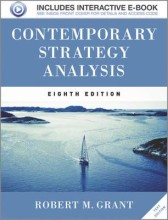Managing Knowledge and learning
5 important questions on Managing Knowledge and learning
What are the four types of knowledge proposed by Nonaka?
Tacit and individual: Automatic, embodied
Explicit and social: Objectified, encoded
Tacit and social: Collective, embedded
What are Nonaka's principles for organizing principles for knowledge creation
• Autonomy – use self-organizing teams
• Requisite variety – heterogeneous groups
• Redundancy – reduced division of labor
• Common vision – use metaphors, analogies, and models
What are two strategies for managing knowledge?
– Provide reliable solutions by reusing codified knowledge (e.g. Accenture)
– Reuse economics
– People-to-documents
– Strong IT focus
– Hire new graduates and train them in groups or through distance learning
• Personalization approach
– Provide creative solutions by channeling individual expertise (e.g. McKinsey) – Expert economics
– Person-to-person
– Low or moderate IT focus
– Hire MBAs who like problem-solving and train them through mentoring
- Higher grades + faster learning
- Never study anything twice
- 100% sure, 100% understanding
What is knowledge networking?
Combination of codification and personalization approach:
Storing and sharing information + Organizing human interaction
What are the prerequisites for knowledge sharing?
1. Use suitable communication channels (balance between codification and personalization = computer + e.g. workshops)
2. Clarify the value of knowledge sharing (create widespread understanding of overall goals)
3. Create incentives for sharing knowledge (awards and visibility to persons who share knowledge)
4. Allocate time for learning and diffusion of knowledge
The question on the page originate from the summary of the following study material:
- A unique study and practice tool
- Never study anything twice again
- Get the grades you hope for
- 100% sure, 100% understanding
































